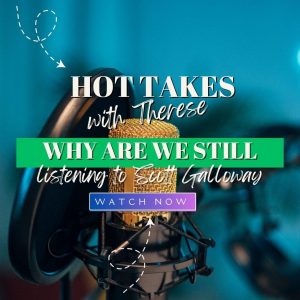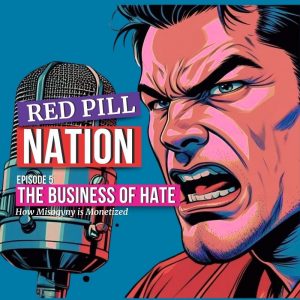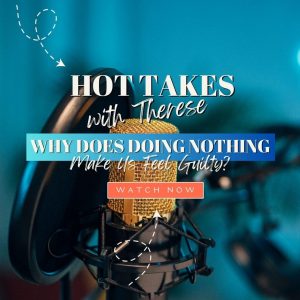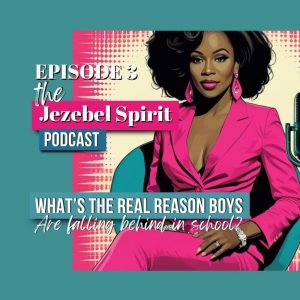From Online Hate to Real-World Violence
When most people talk about online misogyny, they frame it as a bad opinion problem, ugly, yes, but harmless. They could not be more wrong. Misogyny on the internet isn’t just toxic discourse. It is a documented, measurable pipeline to real-world violence.
Mass shooters. Domestic terrorists. Extremist attackers. Across the globe, the men who commit these acts often share a common behavioral history: entrenched misogynistic beliefs and gender-based hostility. This is not theoretical. It has been studied, documented, and repeated across cases.
The manosphere has evolved into a culture that radicalizes young men to believe domination is a right, women are the enemy, and violence is an acceptable way to reclaim lost power. Far from fringe, it’s a growing extremist threat that governments are now classifying as a matter of public safety and national security.
Governments Are Beginning to Name the Threat
In the UK, the Counter-Terrorism Policing Network now labels incel-inspired violence as terrorism. The same bracket as political extremism and hate crimes. Over in the United States, the Secret Service’s National Threat Assessment Center (NTAC) has flagged misogynistic extremism as one of the major warning signs for possible mass violence.
Back in 2022, NTAC put out a case study on the 2018 Hot Yoga Tallahassee shooting. That’s the one where 40-year-old Scott Paul Beierle killed two women, injured four others, and then ended his own life.
Investigators linked his actions to a long record of gender-based violence and deep frustration over his inability to form relationships with women.His beliefs mirrored those of self-identified incels, even if he never adopted the label outright.
A Pattern of Gender-Based Terror
The Tallahassee shooting wasn’t an isolated case. In 2014, Elliot Rodger killed six people and wounded 14 others in Isla Vista, California, after targeting women outside a sorority house. His manifesto, filled with misogyny and resentment toward interracial couples, is still celebrated in some incel spaces.
Then in 2018, Alek Minassian used a rented van to plow into pedestrians on the streets of Toronto, killing 10 people, most of them women, and injuring 14 more. Minutes before the attack, he posted on Facebook hailing the “Incel Rebellion” and praising Rodger.
In 2021, Jake Davison murdered five people in Plymouth, UK, including his mother and a three-year-old girl. He had been posting misogynistic content for years and stockpiling ammunition. His interests included mass shootings, serial killers, and violent incel figures.
The perpetrators vary in age, race, and location, but their motivations share a core belief: that women’s equality is a threat and violence is an acceptable form of control.
The Danger Hiding in Plain Sight
Misogynistic extremists do not always operate on the dark fringes of the web. Roy Den Hollander, a 72-year-old men’s rights lawyer, became a familiar face in mainstream media for his lawsuits against women’s programs and “ladies’ nights” at bars. In 2020, disguised as a FedEx driver, he opened fire at the home of Judge Esther Salas, killing her son and seriously injuring her husband.
Before his death by suicide, Hollander maintained a public website filled with anti-women rhetoric and revenge porn, and he had been interviewed repeatedly by major outlets. His example underscores how dangerous misogynistic ideology can appear under the guise of legal activism, and how often the media normalizes or trivializes it until the violence comes.
“We finally have official recognition that online misogyny isn’t just a cultural issue, it’s a public safety issue. It’s a national security threat.”
A Documented Behavioral Profile
The NTAC’s analysis of gender-based attackers identified a series of recurring characteristics:
- Misogynistic, homophobic, and/or racist beliefs or online activity
- Limited friendships and absence of romantic relationships
- Homicidal revenge fantasies targeting women and girls
- Histories of sexual harassment, stalking, or assault
- Failed career and personal aspirations
- Identification with notorious rapists or killers
- A lack of meaningful consequences for past behavior
- Disturbing or threatening communications
- Escalating anger and externalization of blame
The conclusion was clear: while no single profile can predict violence, the warning signs are consistent and observable. Yet despite the documentation, intervention remains rare.
When the Threat Becomes Local
While this series was being developed, another attack occurred, this time in Leeds, UK. During a popular student pub crawl known as the Otley Run, 38-year-old Owen Lawrence opened fire with a gun and a crossbow, injuring two women.
Lawrence had posted a manifesto calling it the “Otley Run Massacre,” targeting students, nightclub goers, and women in particular. His online presence featured misogynistic rants, open support for right-wing extremism, and praise for white supremacist terrorists. Like others in this space, his case shows how misogyny can merge with broader extremist ideologies, each reinforcing the other.
Misogyny as a Radicalization Gateway
Misogynistic spaces don’t exist in a vacuum. The ideas often overlap with white nationalism, antisemitism, homophobia, and authoritarian politics. This overlap makes it easier for grievance-driven groups to pull members deeper into extremism, whether through conspiracy theories like “The Great Replacement” or cultural myths about men as perpetual victims.
People ranging from pickup artist coaches to high-profile men’s rights figures have openly pushed for predatory behavior, rape legalization, and the dehumanization of women. In some cases, they’ve turned those beliefs into revenue through books, seminars, and online courses that teach coercive and abusive tactics.
The Cost of Normalization
The damage doesn’t stop with the direct victims of violence. Every act of misogynistic aggression sends a message to women that they aren’t safe. Not in public, and not in private. It normalizes the idea that women can be targeted for simply existing, and it erodes trust in the systems meant to protect them.
As feminist writer and activist Sarah Gates has noted, the rise in misogynistic violence has made even ordinary gatherings of women feel dangerous. Yet, misogyny is still not legally recognized as a hate crime in many jurisdictions, despite clear evidence of its deadly impact.
Treating Misogyny as a National Security Threat
According to the Southern Poverty Law Center, over 100 people have been killed or injured in the name of misogynistic incel ideology since 2014. The Anti-Defamation League has documented at least 33 incidents of incel-related violence and plots.
This is not “internet drama.” It is organized, targeted, and lethal. Law enforcement and counterterrorism experts need education about male supremacist violence, and societies need stronger legal, educational, and cultural tools to counter it.
Online misogyny doesn’t stay online. The evidence is overwhelming, and the cost of ignoring it is measured in lives lost.
Next in the series: How misogyny is monetized and why platforms profit from keeping audiences angry, radicalized, and engaged.



